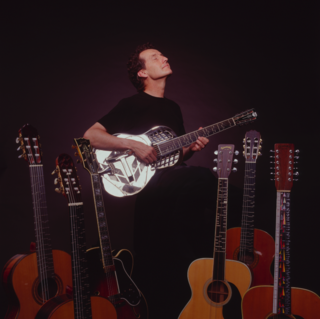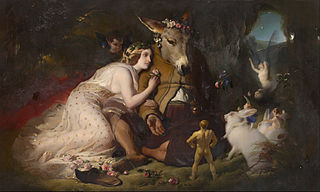Related Research Articles

Karl Amadeus Hartmann was a German composer. Sometimes described as the greatest German symphonist of the 20th century, he is now largely overlooked, particularly in English-speaking countries.

Juan Leovigildo Brouwer Mezquida is a Cuban composer, conductor, and classical guitarist. He is a Member of Honour of the International Music Council.

Julian Alexander Bream was an English classical guitarist and lutenist. Regarded as one of the most distinguished classical guitarists of the 20th century, he played a significant role in improving the public perception of the classical guitar as a respectable instrument. Over the course of a career that spanned more than half a century, Bream also helped revive interest in the lute.

Hans Werner Henze was a German composer. His large oeuvre is extremely varied in style, having been influenced by serialism, atonality, Stravinsky, Italian music, Arabic music and jazz, as well as traditional schools of German composition. In particular, his stage works reflect "his consistent cultivation of music for the theatre throughout his life".

John Schneider is a Grammy® Award winning and 4-time Grammy® nominated American classical guitarist. He performs in just intonation and various well-temperaments, including Pythagorean tuning, including works by Lou Harrison, LaMonte Young, John Cage, and Harry Partch. He often arranges pieces for guitar and other instruments such as harp or percussion.

Heinz Robert Holliger is a Swiss virtuoso oboist, composer and conductor. Celebrated for his versatility and technique, Holliger is among the most prominent oboists of his generation. His repertoire includes Baroque and Classical pieces, but he has regularly engaged in lesser known pieces of Romantic music, as well as his own compositions. He often performed contemporary works with his wife, the harpist Ursula Holliger; composers such as Berio, Carter, Henze, Krenek, Lutosławski, Martin, Penderecki, Stockhausen and Yun have written works for him. Holliger is a noted composer himself, writing works such as the opera Schneewittchen (1998).

Nick Bottom is a character in Shakespeare's A Midsummer Night's Dream who provides comic relief throughout the play. A weaver by trade, he is famously known for getting his head transformed into that of a donkey by the elusive Puck. Bottom and Puck are the only two characters who converse with and progress the three central stories in the whole play. Puck is first introduced in the fairies' story and creates the drama of the lovers' story by messing up who loves whom, and places the donkey head on Bottom's in his story. Similarly, Bottom is performing in a play in his story intending it to be presented in the lovers' story, as well as interacting with Titania in the fairies' story.

Sir Andrew Aguecheek is a fictional character in William Shakespeare's play Twelfth Night, or What You Will. One of the supporting characters, Sir Andrew is a stereotypical fool, who is goaded into unwisely duelling with Cesario and who is slowly having his money pilfered by Sir Toby Belch. He is dim-witted, vain and clownish. His role in the play not only provides comedy through his pathetic situation and his long speech, but also by his distinct, long-faced appearance and garish dress sense. The role has been a favourite for actors and has been performed by Alec Guinness, Christopher Plummer, Paul Scofield and Roger Rees.
David Tanenbaum is an American classical guitarist.
Leif Christensen (1950–1988) was a Danish classical guitarist.
Hans Werner Henze's Symphony No. 1 was premiered in Darmstadt in 1947. The premiere was hit by Henze's accustomed bad luck. The orchestral parts, handwritten by the composer himself, had become illegible during photocopying in Schott’s offices and despite the young composer’s best efforts to ink in the parts throughout the night, only the slow movement was performed. The whole symphony was eventually premiered a year later, although Henze himself conducted the work only after comprehensive revision.
Raymond Henry Charles Warren is a British composer and university teacher.

Requiem is an instrumental musical composition by Hans Werner Henze, premiered in Cologne on 24 February 1993. It consists of nine sacred concertos for piano solo, trumpet and large chamber orchestra. About this piece, the composer has the following comments.
These nine instrumental pieces are concerned with the human fears and problems of our time, with illness and death, love and loneliness, and in particular with the character of Michael Vyner, an extremely lively and passionate man, his life and his death, and my grief at his loss which stands for the loss of so many others who have also tragically departed from our world. The spirit of this music can be explained by such facts and by our time, by which it seems to me to be strongly influenced, by its horrors and passions, its beauty and dynamics. The movements of the Requiem can be played separately or in any desired combination. Hans Werner Henze

To a greater extent than most other instruments and ensembles, it is difficult to compose music for the guitar without either proficiency in the instrument or close collaboration with a guitarist. As a result, a large part of the guitar repertoire consists of works by guitarists who did not compose extensively for other instruments. Music prior to the classical era was often composed for performance on various combinations of instruments, and could be adapted by the performer to keyboard instruments, the lute, or the guitar. Since the beginning of the 20th century, however, a significant amount of music has been written for the guitar by non-guitarist composers.
Fantasia for Strings is a composition by German composer Hans Werner Henze. It was finished in 1966, as part of the soundtrack for Volker Schlöndorff's film adaptation of Robert Musil's novel The Confusions of Young Törless. This composition has been published by Schott Music.
The String Sonata No. 1, commonly referred to by its original Italian name Sonata per archi, is a composition for string orchestra by German composer Hans Werner Henze. It was composed between 1957 and 1958.

The Double Concerto by German composer Hans Werner Henze is a double concerto for oboe and harp, better known by its original Italian title Doppio concerto. It was completed and first performed in Zurich in 1966, and published by Schott.
The Vokalsinfonie by Hans Werner Henze was written in 1955. The sung text is by German writer Heinz von Cramer.
Peter Petersen is a German musicologist and professor emeritus of the University of Hamburg. He focus on 20th-century music, rhythm, and was instrumental in the university's Exile Music Working Group and the online Lexikon verfolgter Musiker und Musikerinnen der NS-Zeit.
References
- 1 2 "Royal Winter Music". www.schott-music.com. Retrieved 2024-02-28.
- ↑ "Royal Winter Music". Schott Music.
- ↑ Henze, Hans Werner Royal Winter Music liner notes, Wergo.
- ↑ "Royal Winter Music". www.schott-music.com. Retrieved 2024-02-28.